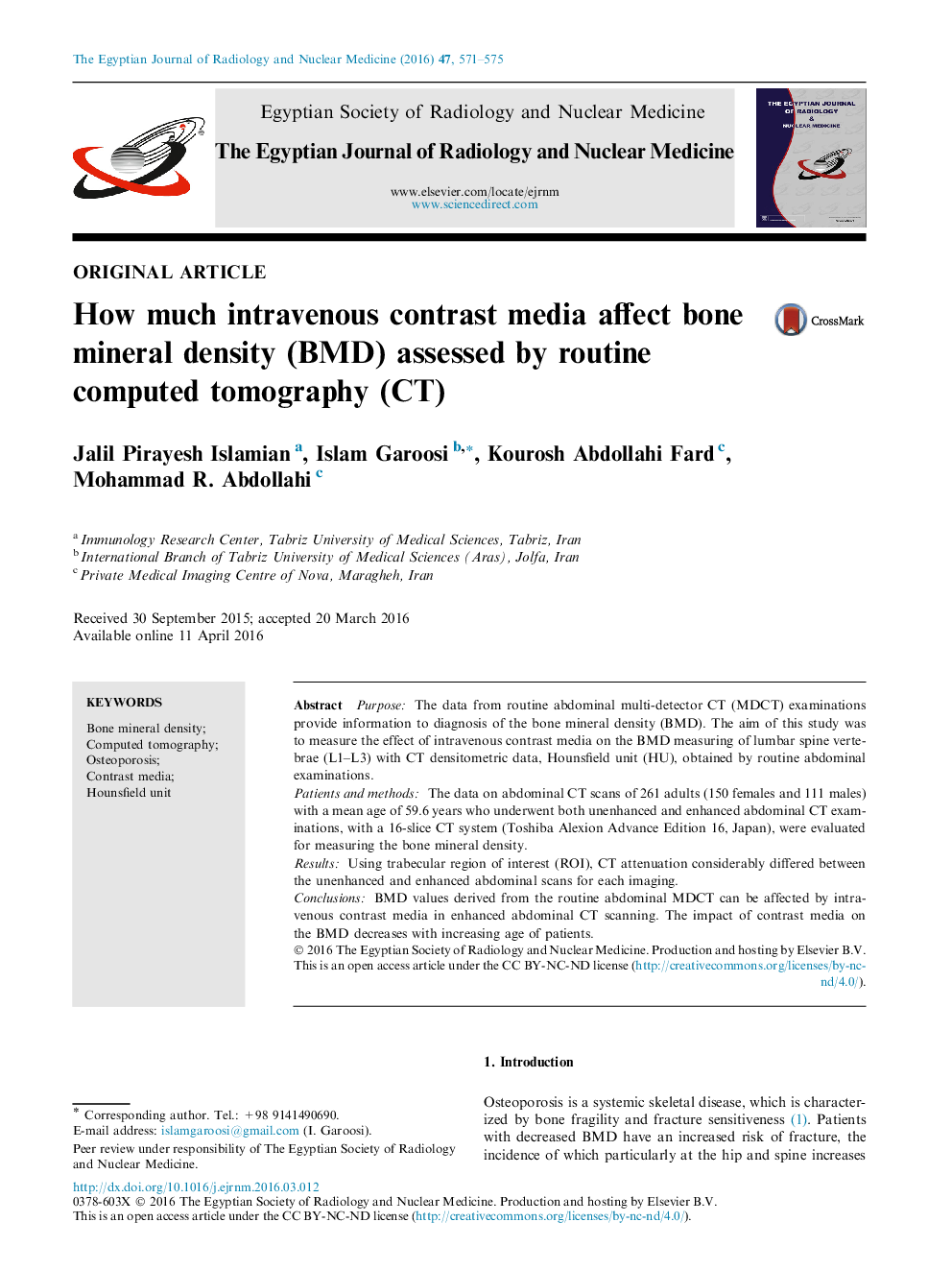| Article ID | Journal | Published Year | Pages | File Type |
|---|---|---|---|---|
| 4224099 | The Egyptian Journal of Radiology and Nuclear Medicine | 2016 | 5 Pages |
PurposeThe data from routine abdominal multi-detector CT (MDCT) examinations provide information to diagnosis of the bone mineral density (BMD). The aim of this study was to measure the effect of intravenous contrast media on the BMD measuring of lumbar spine vertebrae (L1–L3) with CT densitometric data, Hounsfield unit (HU), obtained by routine abdominal examinations.Patients and methodsThe data on abdominal CT scans of 261 adults (150 females and 111 males) with a mean age of 59.6 years who underwent both unenhanced and enhanced abdominal CT examinations, with a 16-slice CT system (Toshiba Alexion Advance Edition 16, Japan), were evaluated for measuring the bone mineral density.ResultsUsing trabecular region of interest (ROI), CT attenuation considerably differed between the unenhanced and enhanced abdominal scans for each imaging.ConclusionsBMD values derived from the routine abdominal MDCT can be affected by intravenous contrast media in enhanced abdominal CT scanning. The impact of contrast media on the BMD decreases with increasing age of patients.
